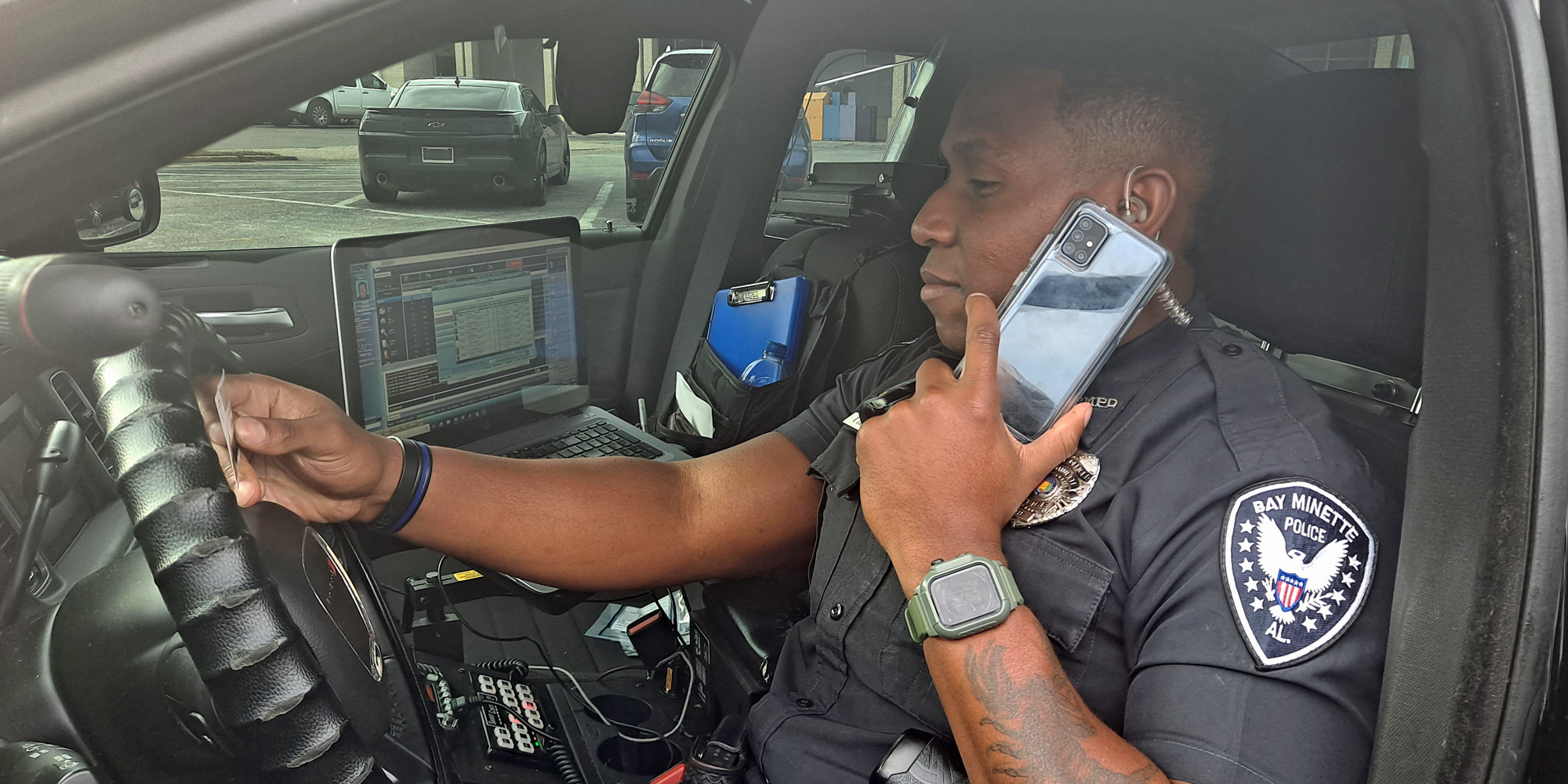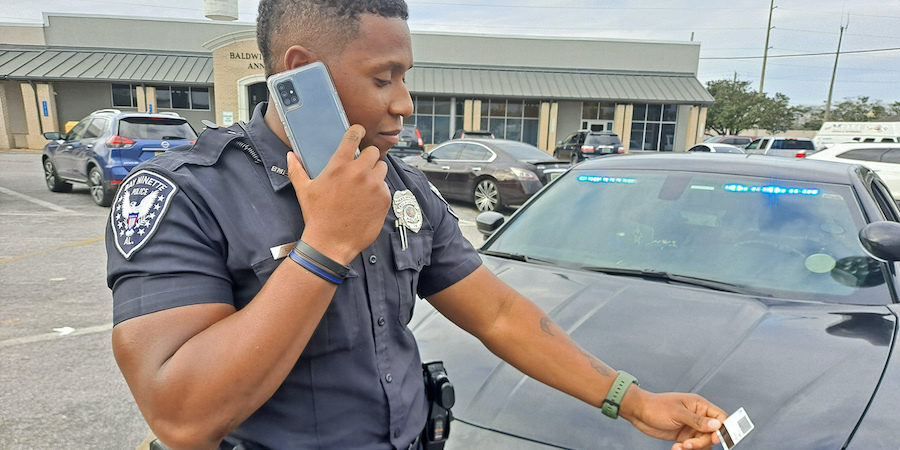Like many small public safety agencies, the Bay Minette Police Department (BMPD) of Alabama must carefully manage its budget to ensure the basics are covered. Recently, BMPD took a big step forward in terms of tech capabilities by deploying smartphones to all patrol officers — without the agency spending a dime. Here’s the inside story on how it all came together.
The launch of T-Mobile Connecting Heroes
In November 2019, T-Mobile CEO Mike Sievert announced the launch of a new program called Connecting Heroes to provide free unlimited calling, text and data for smartphones used by public and nonprofit state and local first responder agencies. In a video, Sievert said Connecting Heroes will remain available to eligible public safety agencies for the next 10 years. Although agencies have to provide (or acquire) the mobile devices, the savings on wireless service will be substantial. Sievert estimated the budgetary savings for police, fire and emergency medical services (EMS) agencies across the country could amount to $7.7 billion over the program’s 10-year period.
Your guide to mobilizing law enforcement
Plan and implement a mobile initiative at your agency with this practical roadmap. Download Now
Samsung then partnered with T-Mobile to make several models of smartphones available at a significant savings, including some devices that can take full advantage of T-Mobile’s expansive 5G network.
Bay Minette Police Department engages
This summer, BMPD Chief Al Tolbert won a grant from the Spirit of Blue Foundation (SOBF), a nonprofit dedicated to enhancing officer safety through safety equipment grants, which provided BMPD with 20 Samsung Galaxy A51 5G smartphones — enough to equip every patrol officer. SOBF also reached out to OtterBox, and the company graciously agreed to support BMPD’s project by donating protective phone cases.
According to SOBF executive director Ryan Smith, the organization usually awards grants to cover more traditional safety equipment or items like tourniquets. The benefits of having a smartphone for officer safety were an especially compelling case. “Officers live or die by the information they have. It helps them make good decisions,” Smith says. “Bay Minette PD was among the first few hundred Connecting Heroes deployments in the country, and we are proud to have been involved.”

Chief Tolbert’s agency has a small budget, so issuing smartphones to every patrol officer had never been affordable. That changed with the free wireless service provided by T-Mobile’s Connecting Heroes and the grant from Spirit of Blue for devices. BMPD officers are now using their smartphones extensively, and Tolbert has been particularly pleased with the operational benefit for school resource officers (SROs).
“The Samsung smartphones running on T-Mobile’s network are working really well within the school properties and buildings, and this allows dispatch to contact the officers with ease,” Tolbert explains. “Overall, this project allows our officers to be more productive and safer while performing law enforcement duties. We’re very grateful for the Spirit of Blue grant and the Connecting Heroes program.”
Now that BMPD has smartphones deployed to all of its officers, the agency is looking to add other tech capabilities. Just as BMPD officers actively use their phones to obtain any information that could help them work more effectively in the field, they are also encouraged to suggest other useful apps. Tolbert is also looking to have the agency’s computer-aided dispatch (CAD) vendor add a mobile client so that each officer’s smartphone would be CAD-enabled, allowing officers to access critical information like building floor plans while they’re on the go. Tolbert has arranged for a police consulting firm to meet with his command staff to consider policy implications and outline best practices so that BMPD can maximize the benefits of full smartphone deployment.
Reasons for going mobile
Smartphones provide field officers impressive utility, saving time and streamlining communications, so officers spend less time tying up the radio and going through dispatchers. A picture of a wanted subject or missing child can be distributed among officers without delay — and a photo is significantly more effective than a verbal description. Smartphones can also be used to gather photo or video evidence, dictate reports, make e-citations, manage body worn cameras, remotely access agency-controlled CCTV devices and even provide in-field translation with free apps like Google Translate.
Agency-owned over BYOD
Some agencies have allowed their officers to use their personal smartphones on-duty, but this approach is not ideal in law enforcement. Questions quickly arise regarding evidence and privacy. And if an agency plans to let officers use their own smartphones to search criminal justice databases, additional measures must be taken to achieve the required CJIS compliance. In fact, CJIS policy discourages agencies from relying on Bring-Your-Own-Device (BYOD), citing the costly compensating controls and the imposition of security restrictions on private devices (CJIS Policy Appendix G4).
Connecting Heroes makes it possible
Deploying smartphones to field personnel offers clear operational benefits, but many agency leaders assume that agency-wide deployment would be cost-prohibitive, partly due to the ongoing wireless service fees (often cited as the reason for choosing BYOD). Now, agency leaders have reason to reevaluate their position and run the numbers. With free wireless service and substantial savings on a wide range of devices, the Connecting Heroes program overcomes budget challenges and presents a new opportunity for agencies to gain connected-officer capability.
To find out more about the Connecting Heroes program and the current savings being offered by Samsung to help agencies engage, check out T-Mobile Connecting Heroes. To learn more about rolling out a mobile program, check out our free Ultimate Law Enforcement Agency Guide to Going Mobile.








